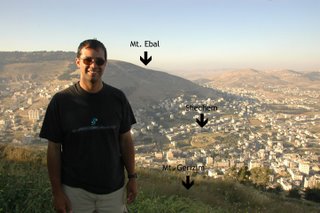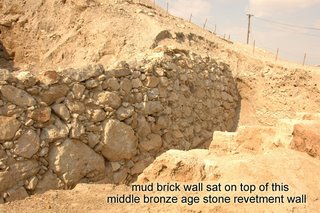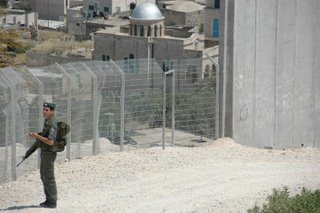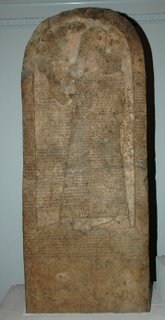Masada and Manuscripts
Day 12 - Yad HaShmonah, Judean Hills, Israel - We've been staying at hotels without internet connections so I have not been able to post. Tonight we're back online! This was another long day. It began at 5:00am with a climb up Masada to see the sunrise. Masada is the second most popular tourist site in Israel. It is most famous for being the fortress of the last holdouts from the Jewish rebellion after the destruction of Jerusalem in 70 AD. The buildings on the top of this massive mountain in the desert were built by Herod the Great and are still imposing.  We finished the day with a climb up to Cave 1 and Cave 2 near the ruins of Qumran. If you are not familiar with theDead Sea Scrolls (DSS), Cave 1 is the cave where the very first (and best) scrolls were found (Cave 2 is the second cave where scrolls were found). The DSS are arguably the most significant archaeological find of the 20th century. Why are they so important? I'll give you only one reason. Until the DSS were found the oldest complete manuscript of the Old Testament in existence was the Leningrad Codex, which dates to 1000 AD. That's a long time from when these books were first written down. This provokes a lot of questions. Questions like: It is possible that massive errors were introduced into the text during all those years it was copied and recopied by hand? Is the OT reliable? Can we trust that the text we have is the text Moses, or Jonah, or Isaiah wrote down? The DSS help answer these questions to a great degree. Why? Because the earliest DSS manuscripts date to around 250 BC. When scholars compare the DSS to the OT manuscript from 1000 AD they see that the texts are essentially identical. There are minor differences, but for all practical purposes the texts are identical. This shows that the scribes who were copying these texts by hand for hundreds of years did a very good job of transmitting the texts they were copying. I have of course simplified this very complex subject, but these are the high points. The DSS support the claim that the OT has been carefully and accurately transmitted to us. Praise the Lord.
We finished the day with a climb up to Cave 1 and Cave 2 near the ruins of Qumran. If you are not familiar with theDead Sea Scrolls (DSS), Cave 1 is the cave where the very first (and best) scrolls were found (Cave 2 is the second cave where scrolls were found). The DSS are arguably the most significant archaeological find of the 20th century. Why are they so important? I'll give you only one reason. Until the DSS were found the oldest complete manuscript of the Old Testament in existence was the Leningrad Codex, which dates to 1000 AD. That's a long time from when these books were first written down. This provokes a lot of questions. Questions like: It is possible that massive errors were introduced into the text during all those years it was copied and recopied by hand? Is the OT reliable? Can we trust that the text we have is the text Moses, or Jonah, or Isaiah wrote down? The DSS help answer these questions to a great degree. Why? Because the earliest DSS manuscripts date to around 250 BC. When scholars compare the DSS to the OT manuscript from 1000 AD they see that the texts are essentially identical. There are minor differences, but for all practical purposes the texts are identical. This shows that the scribes who were copying these texts by hand for hundreds of years did a very good job of transmitting the texts they were copying. I have of course simplified this very complex subject, but these are the high points. The DSS support the claim that the OT has been carefully and accurately transmitted to us. Praise the Lord.






